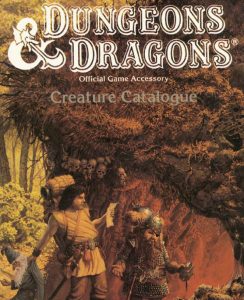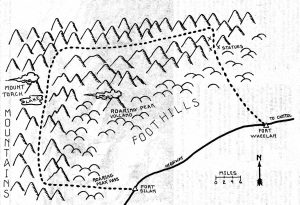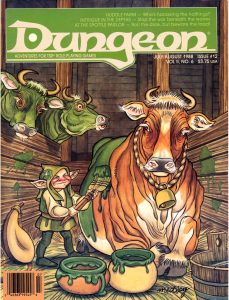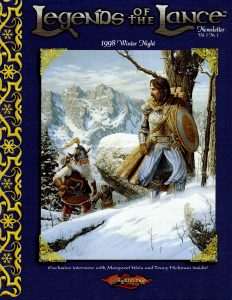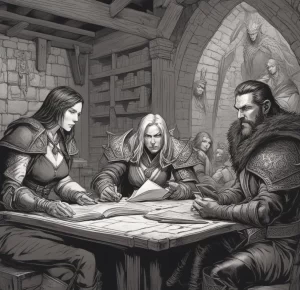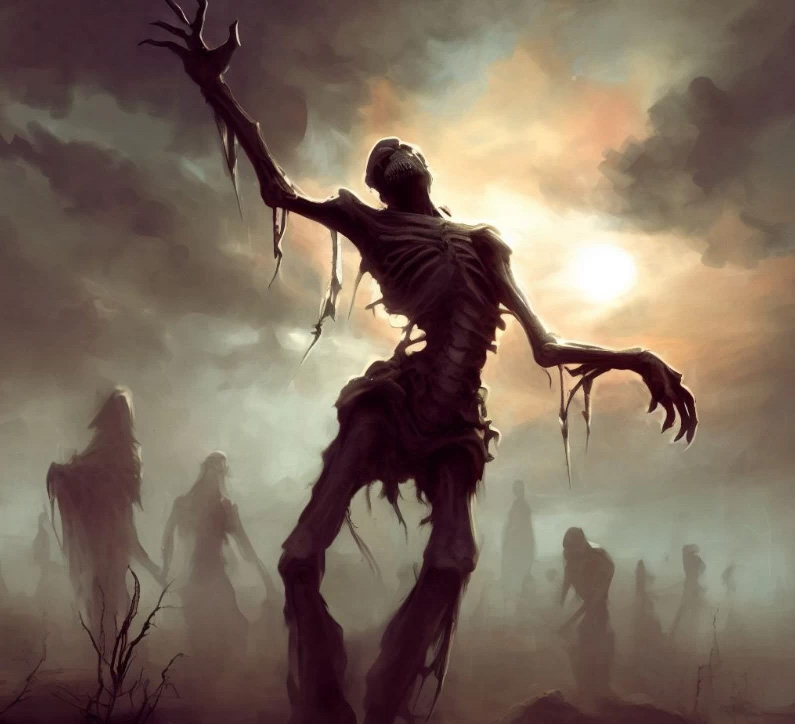
In the depths of occult knowledge, there exists the unsettling truth that not all undead are hollow shells; some retain their souls after the shattering experience of death. Through insidious rituals or the force of an indomitable will, certain creatures defy the finality of death, transitioning into a form far more menacing than soulless undead. This breed of undead not only commands the shadowy energies of their new state but also wields powers they possessed in life. Imbued with free will, they walk among the living as autonomous beings, often driven by dark desires, their path to immortality leaving them forever changed.
Sentient ghosts form the majority of such soul-bound undead who need no dark rituals to tether their souls to this realm. Bound by a purpose that often bodes ill for the living, they wander through the veil of existence, either spreading sorrow or seeking revenge. Then there are the death knights, liches, mummies, and vampires, each a creation of grim rituals that lock the soul into an unliving vessel. This spectrum of the undead serves as a grim testament to the reach of death in all its twisted variations.
When one contemplates how the undead come into being, the obvious assumption is that they emerge from the cadavers of the dead. Yet the reality is far more intricate and unsettling. Some undead are born out of sins so heinous they fracture the fabric of reality, allowing malevolent entities to seep through into our world. These dark spirits are drawn to recently vacated bodies like moths to a flame. Once nested within, they taint the life force of the deceased, granting the corpse a grotesque semblance of life. Although they may appear intelligent and cunning, these abominations are devoid of the original soul, simply serving as vessels for malevolent animus.
In certain hellish instances, unspeakable acts of evil draw these spirits into a body so freshly departed that the original soul remains trapped inside. Such souls experience a slow, tormenting transformation as they are twisted by the invading spirit. And even among the living, there are those who become infected by these ghastly forces. Their bodies turned into hosts for undead spirits, they walk a twisted path, forever balancing on the brink between life and an eternal curse.
Thus, the lines between death, undeath, and life blur into a tapestry woven from the darkest threads of existence, each strand a pathway leading to an outcome more horrifying than the last.
From the shivering utterances of humble peasants to the arcane analyses of scholars secluded in libraries of forbidden knowledge, the origin of the undead has been a source of unending debate. Yet, as the sun sets each day casting long shadows that dare the brave and the foolish alike to ponder what lurks in the darkness, one unshakeable fact remains: the undead are among us. They have been here since antiquity, populating our worst nightmares and lurking on the fringes of our understanding, as mysterious in purpose as they are terrifying in form.
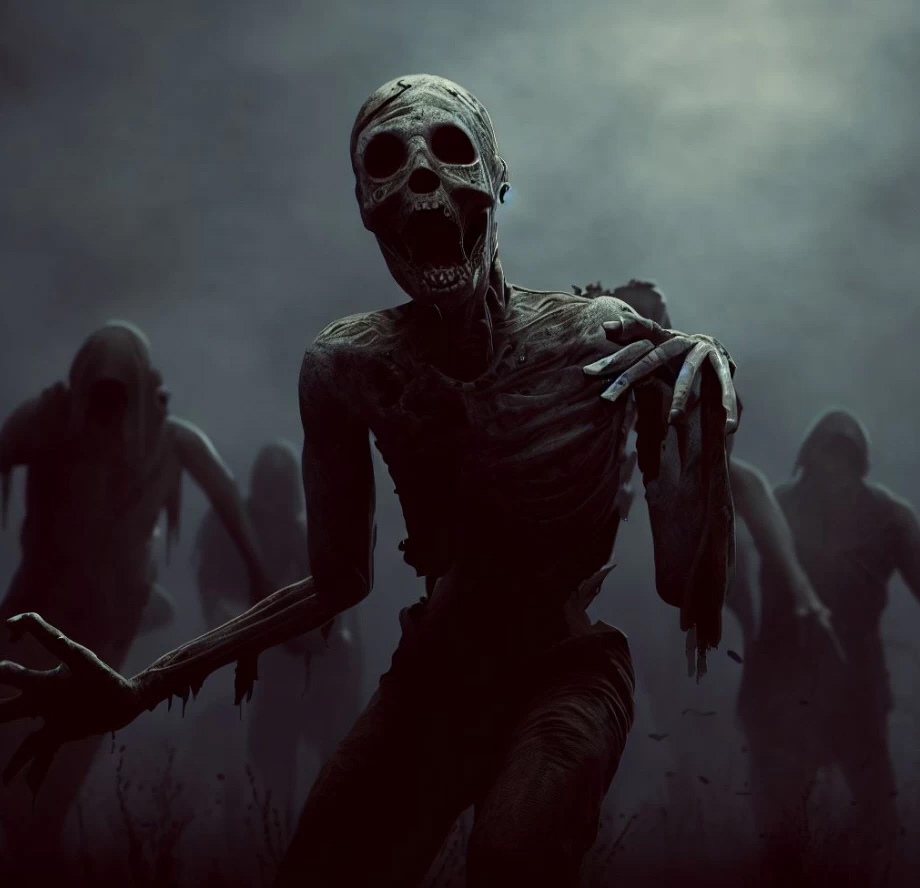
Primordial Dawn
Tracing the undead back to their roots takes us to an era that defies comprehension-an ancient dawn where primordial entities danced upon the cosmic stage. These titans, beings of sheer entropy and chaos, were neither constrained by age nor susceptible to harm. Their ceaseless quest for cosmic control churned the young universe into a tapestry of possibilities and horrors. They yearned to orchestrate the unfolding of existence itself, and their influence echoes through the eons, a dark melody of ambition and destruction.
Creation's Echoes
These primordial beings were not mere bystanders to the universe's birthing pains; they were its midwives and architects. Among the residual chaos, they sculpted not just the world, but the realms that mirror it. The Feywild-a realm of capricious beauty, bursting with light and magic-was their first masterpiece. Its dark twin, the Shadowfell, emerged soon after, a realm where dread and darkness wore the crown. Both realms carried the primordial imprint, palpable energies that blurred the lines between creation and doom.
Cosmic War
The arrival of gods shook the very foundations of the universe. They emerged with their own ethereal agendas, setting celestial gears into motion. To the primordials, the gods were interlopers in a cosmic narrative that they had been weaving since the dawn of time. Thus ignited a conflict of epic proportions, a celestial collision that rattled the cosmos. As blades of metaphysical essence clashed and ethereal fires raged, the universe held its breath, uncertain of its fate.
Soul Harvest
Amidst the cosmic uproar, the primordials discerned an untapped reservoir of power: the souls of mortals. In their arrogance and desire for might, the primordials began to imprison these wandering souls. Some among them grew gluttonous, gorging on the captured spirits as if feasting on delicacies in a banquet of horror. Other souls, aimless and tormented, dissolved into cosmic obscurity, vanishing like wisps of smoke. Yet, a remnant endured this metaphysical tumult, mutating into entities that defy life and death: the undead we know today.
The Death Guardians
The gods, ever watchful, also recognized the incalculable worth of souls. One among them rose to take stewardship of an uncharted dominion, a realm where souls might find refuge or damnation. Initially governed by Nerull, and later by his enigmatic successor, the Raven Queen, this realm took form as the ultimate crossroads. Here, souls would either transcend to divine sanctuaries or dissolve into mysteries beyond comprehension. The realm thus became the arena where the eternal fates of souls-and the seeds of the undead-were sown.
Deities of Death and Undeath
While all gods exert some control over the cycle of life and death concerning their devotees, there are a select few entities that take a peculiar and disquieting interest in undeath itself. Their motivations, as varied as they are, weave a complex tapestry that governs the grim ballet of the undead.
The Raven Queen's Inscrutable Will
The Raven Queen, shrouded in an enigma as dense as the raven feathers that cloak her, stands as a sentinel over death and destiny. Her role in the realm of undeath is as confounding as her existence. Her authority reveals itself in unpredictable bursts; at times she allows some souls to linger in a state neither living nor dead, while ruthlessly snuffing out others. The sense of her judgement is opaque, making her one of the most mysterious players on the stage of undeath.
Vecna's Necromantic Ambitions
Vecna, the god of magic, dark arts, and forbidden secrets, views undeath as a means to an end. His ascension to godhood is marred with unspeakable acts, each steeped in necromantic intricacies. While he finds the mindless undead useful as foot soldiers or as wards for his hidden sanctuaries, it's the intelligent undead that catch his eye-particularly those who walk the shadowy path of necromancy. They serve his dark vision of an eternal quest for forbidden wisdom.
Orcus: The Demon Prince's Unending Schemes
Orcus, the formidable Demon Prince of the Undead, is a tumultuous force of malevolence and ambition. Leading hordes of the restless dead, he covets the Raven Queen's throne and the unimaginable power it bestows. Yet, his abilities are confined to the mere maintenance of deathly forms; he cannot weave the threads of life and death as the Raven Queen does. Frustrated and driven by an insatiable desire for power, Orcus plots relentlessly, scheming to topple the Raven Queen and claim her dominion as his own.
Death is not a definitive cessation for many beings but a layered and complex phenomenon. Even for those who are not part of grand cosmic designs, there is often a curious persistence of existence-or at least a haunting vestige of it-that serves either as a blight or a mystery to the living.
The Duality of Body and Soul
In sentient creatures, the physical body and the soul exist in a synergistic relationship. The soul serves as the vessel for consciousness and is the part of a creature that departs when its body perishes. The animus, on the other hand, acts as the life force that fuels a being's physical and emotional faculties. While both the soul and animus are transient, disappearing when a creature dies, their function and behavior in death differ markedly.
Animus: The Unsung Force
The animus is not as straightforward as the soul; it is the underpinning of a creature's vitality and locomotion. Unlike the soul, which is indivisible and finite, the animus erodes gradually as a corpse decays. When manipulated through the correct procedures or magics, the animus can animate a dead body in the absence of a soul. This principle even allows entities that never had life-like constructs-to exist in a state of undeath.
Catalysts of the Animus
Various forces can galvanize the animus, granting it the energy required for this unnatural form of life. Necromantic magics, geographical locations imbued with malevolent energies, and ties to the eerie plane of the Shadowfell can serve as the catalyst. Sometimes, the strong desires or emotional states of the deceased can even stir the animus into activity.
Varieties of the Undead
Most undead creatures are soulless husks, propelled by the remaining fragments of their animus. They display varying levels of awareness and intelligence, ranging from mindless shamblers to sentient monstrosities. Creatures like wights possess a body and a rudimentary form of awareness granted by the animus, but are devoid of a soul. Wraiths, meanwhile, are nothing but pure, corrupted animus, energized by dark necromantic forces.
The Shadowfell's Sinister Influence
The enigmatic plane of the Shadowfell serves as a common source for the animus' activation into undeath. Within this grim echo-realm, both disembodied spirits and undead are abundant. Shadowstuff-the ethereal essence of the Shadowfell-can infiltrate dying beings, either naturally or through necromantic rites, and accumulate in places strongly linked with death.
Vile Life Reanimated
In the bowels of cursed catacombs and shadow-draped sanctuaries, where profane relics lie guarded by malevolent spirits, an abomination takes shape. These unholy grounds are birthing chambers for a vile breed of undead-no mere wandering corpses but monstrous aberrations infused with corrupted souls. Emanating from grounds so defiled that they seep malice, these entities are predestined to exist in a ghastly state, their souls scarred by darkness long before their mortal demise.
Contrary to the belief that external, arcane forces animate these monstrosities, the grim reality is far more insidious. It is their own animus, their inherent life force twisted and defiled, that grants them motion, fuels their malevolent intellect, and worst of all, instills an insatiable hunger for the living. Such territories are foul beyond words, saturated with the accumulated wickedness of ages, ground so desecrated that it can only be described as a lair of absolute malevolence.
Even the living are not spared from this chilling corruption. The unfortunate souls who stray too close may find their vitality sapped, their essence infected by a dark miasma. This is not mere energy being extracted; it's an unholy transfer, a pernicious conversion that could not only lengthen the existence of another being but also empower other malefic operations or diabolical devices.
Should the drained remnants of life reach the brink of death, they become inviting vessels for otherworldly entities, soulless cadavers easily seized by lurking fiends. The corpse turns into a loathsome incubator for new terrors. The stronger the undead, the more life force they can leech, amplifying their malevolence in an ever-widening circle of darkness. Creatures like wraiths and vampires, hollowed of soul yet voracious for the life essences they can no longer produce, continue this cycle, birthing new horrors with each life they corrupt.
Moreover, some of these undead nightmares are carriers of contagions so lethal, they hasten death only to resurrect the victim as a freshly damned creature of the night. Others emerge from perverse intellectual quests that spiral into damnation. Those who delve too deeply into the enigmas of mortality may end up embracing their own cursed existence, metamorphosing into wretched beings like liches, forever forsaking the joys of life for a ceaseless, hollow existence.
In an even more unspeakable horror, some undead entities are pieced together from disparate corpse parts, each component meticulously chosen for its vile potential. Once assembled and subjected to unholy rites and dark energies, these conglomerates rise as monolithic abominations. They may bear superficial resemblances to flesh golems, yet they are something far more grotesque-a patchwork of agony, a collective of multiple trapped souls shrieking in eternal torment.
In this world of unending dread, the lines between the living, the dead, and the monstrously reanimated blur into an indistinguishable mass of terror. Every corridor, every choice, every breath leads only to new dimensions of horror, in a cycle that knows neither end nor mercy.
